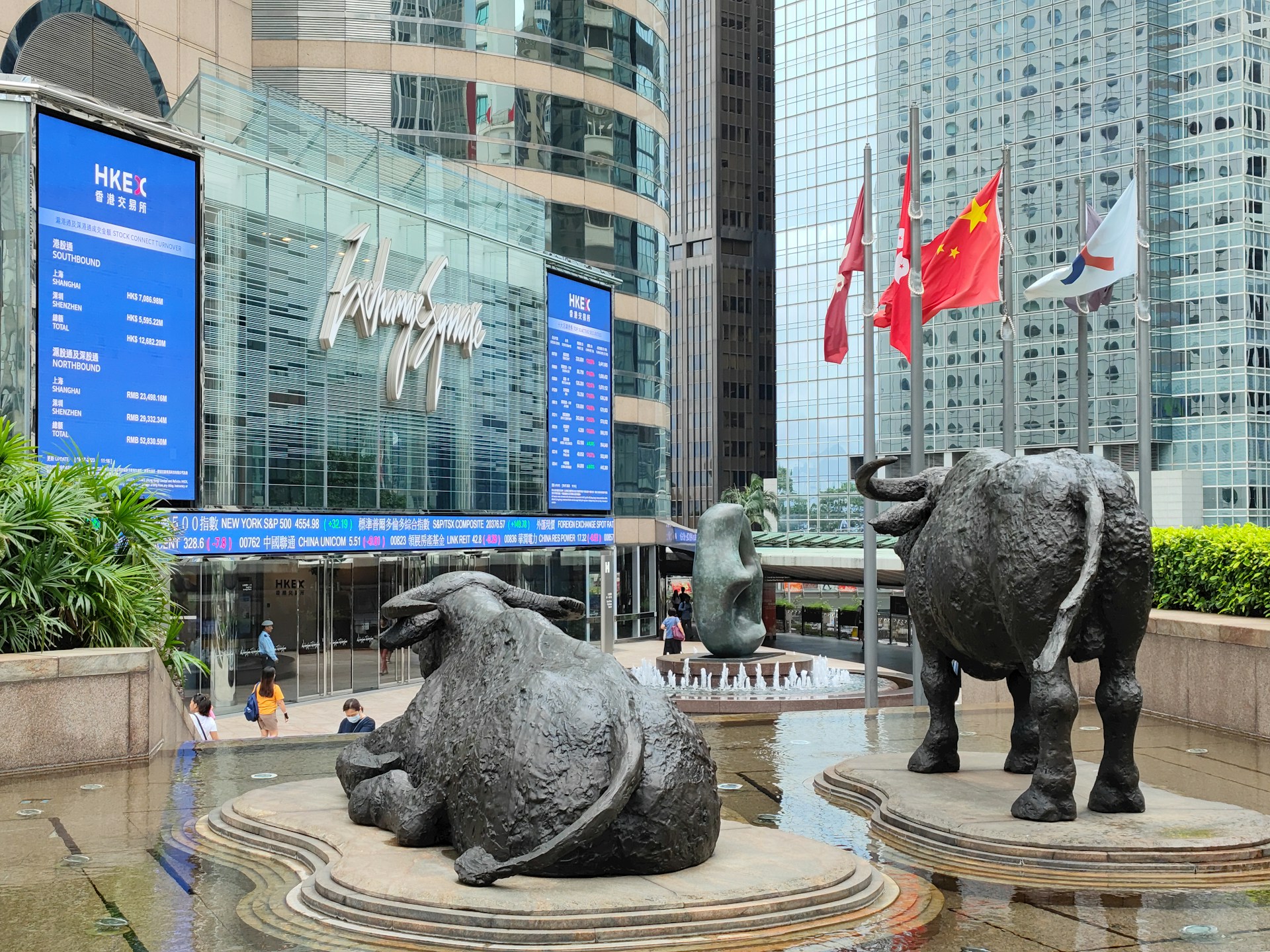Hong Kong’s fifth straight down day reads less like another sympathy move after Wall Street and more like a model reset for China-linked equities. The immediate trigger is clear enough: US Treasury Secretary Scott Bessent suggested there is no imminent shift on tariffs, and the tape took it at face value. If tariff relief is not on a near-term path, investors have to reprice where growth, margin, and cross-border optionality actually come from. That is why the sell-off is concentrated in platform and healthcare names rather than uniformly across the board.
By the noon break, the Hang Seng Index was down 0.6 per cent at 24,980.20, extending Tuesday’s 0.2 per cent loss. The Hang Seng Tech Index fell 1.3 per cent. Mainland benchmarks were softer but more contained, with the CSI 300 and Shanghai Composite both off 0.1 per cent. The softness in Hong Kong tells you where the tariff narrative bites first: companies that depend on cross-border demand cycles, policy-sensitive monetization, or foreign sentiment to unlock higher multiples.
Kuaishou’s 4.7 per cent drop to HK$70.55 is a good window into how this repricing works. Short-video platforms monetize via ads and commerce take rates. Both depend on brand budgets and merchant confidence. When tariffs look sticky, exporters and global-facing brands sit on ad spend, and merchants think twice about inventory risk. The platform can still grow usage; the monetization per minute gets harder. If you’re building a growth roadmap inside a consumer internet business, this is where LTV math goes sideways: the mix shifts to lower-margin domestic categories and you lean more on subsidies or promos to keep conversion flowing. The product is fine; the revenue quality changes.
JD Health’s 6.4 per cent slide to HK$62.30 reflects a different but related pressure. Digital health demand isn’t strictly trade-exposed, yet it lives under reimbursement policy, consumer confidence, and pricing scrutiny. In a market anxious about external headwinds, investors default to questioning where pricing power will come from if household sentiment is cautious and regulators continue to push affordability. Tariffs don’t touch the doctor, but they do touch the willingness to pay for discretionary upgrades in care pathways. In platform terms, you keep the user; you downgrade the basket.
Hansoh Pharmaceutical’s 7.8 per cent decline to HK$35.78 speaks to the same de-rating mechanism through another channel: policy. China’s volume-based procurement and a multi-year pressure on drug prices haven’t gone away. When the macro narrative turns defensive, investors become less willing to underwrite long dated pipelines or assume smooth commercialization at premium pricing. Even if tariffs are not the driver for pharma fundamentals, the “no relief” signal pushes funds to reduce China risk where price discovery is already tough.
Midea Group’s 1.9 per cent fall to HK$81.05 is the export-sensitivity story in plain sight. Appliances are a margin game built on volume, channel, and cost control. Persistent tariffs compress addressable growth in the US and complicate channel planning. The result is a valuation that leans more heavily on domestic demand and cost engineering, which is fine operationally but supports a lower multiple if investors can’t price upside from easier US access.
Step back and you can see the common thread. “Hong Kong stocks fall on tariff uncertainty” isn’t just a headline description of the day; it’s a shorthand for a funding and monetization constraint across several business models. Platforms lose the easy lever of cross-border category expansion. Healthcare loses the benefit of risk appetite for longer-duration assets. Exporters lose a clean narrative to grow mix in higher-margin overseas channels. In each case, the cash flow story survives, but the optionality premium—what investors pay for what the model could become—shrinks.
The mainland’s milder declines suggest domestic allocators are not in panic mode. This is consistent with an environment where local liquidity is selective and policy support is incremental rather than sweeping. If you are an operator, that tells you what to prioritize: resilience over reach. Build for domestic retention and unit economics you can defend in a sideways tape. Assume cross-border normalization is an upside, not a plan. If your revenue mix depends on categories that swing with trade headlines, consider product work that moves you toward services, payments, or subscriptions where pricing conversations are less cyclical.
There’s also a governance subtext. Bessent’s “no imminent change” is a policy-continuity signal. Markets can live with tight policy if they can model it. What hurts multiples is policy that looks negotiable but isn’t moving. In that world, founders and CFOs should treat FX, tariffs, and compliance as design constraints, not externalities. For internet models, that might mean trimming low-ROI international promotions and building more durable merchant tooling. For exporters, it could mean pre-positioning inventory, reworking channel partnerships, or aligning SKUs to tariff-resilient segments.
Investors didn’t sell everything. They sold where tariff stickiness most obviously caps upside. That is a rational repricing, not a blanket rejection of China risk. If policy rhetoric evolves or domestic stimulus narrows the earnings gap later in the year, the optionality premium can come back. Until then, expect Hong Kong to trade on proof, not promise.
The focus keyword appears apt because it captures the real mechanism at work. Hong Kong stocks fall on tariff uncertainty, and that uncertainty is being embedded directly into how markets value platform monetization, healthcare pricing, and export exposure. It’s not a market tantrum. It’s the ecosystem doing new math.






.jpg&w=3840&q=75)
.jpg&w=3840&q=75)
.jpg&w=3840&q=75)






